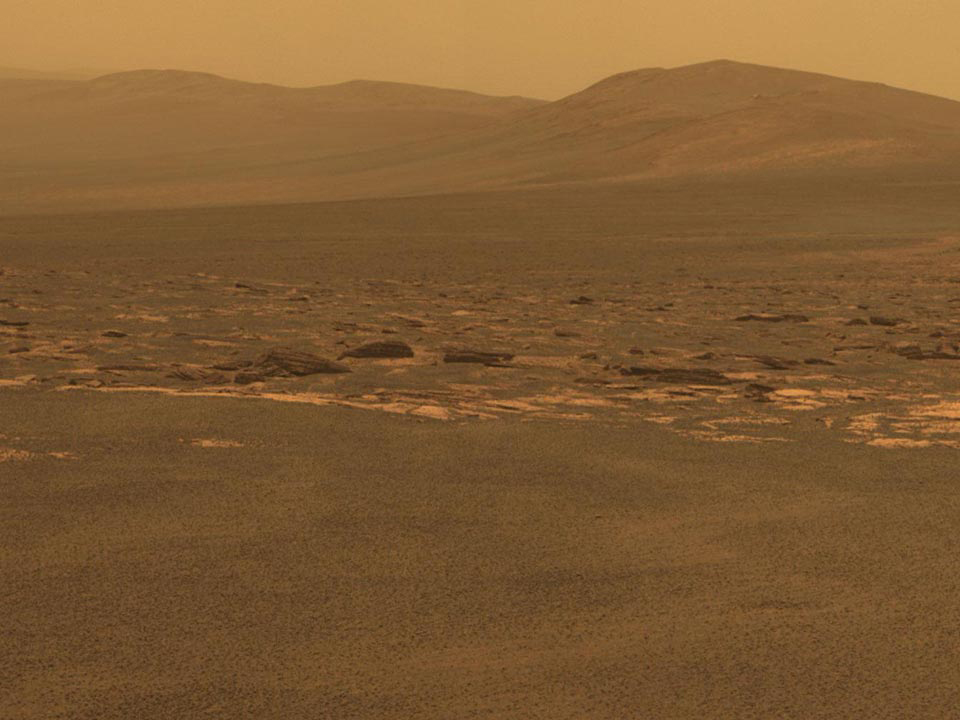Yesterday, after a 3-year, 21-kilometer journey at top speeds of less than 0.2 kilometer per hour, the Opportunity rover finally arrived at Mars’s Endeavour crater
. The intrepid explorer had already poked into 11 craters, the largest 750-meter-wide, 70-meter-deep Victoria, and analyzed rocks and soil along 33 kilometers of track. But the geologic story it read there always spoke of an ancient martian wasteland of windblown dunes pocked by the occasional acid-laced puddle. Now that it has arrived at 22-kilometer-wide, 300-meter-deep Endeavour, Opportunity may be on the brink of rock from earlier, more hospitable times in martian history. NASA’s Mars Reconnaissance Orbiter has detected clay in rock of the crater rim exposed by the far larger impact explosion that created Endeavour. And the presence of clay tells geologists that water altered the rock under far milder, presumably more habitable conditions than those that produced the rock Opportunity or any other rover has analyzed to date. NASA’s $2.5 billion Curiosity rover scheduled to launch this November, if successful, will not likely reach its clay-bearing target in Gale crater until 2013.
Rover Takes a Deep Look Into Mars
·1 min
